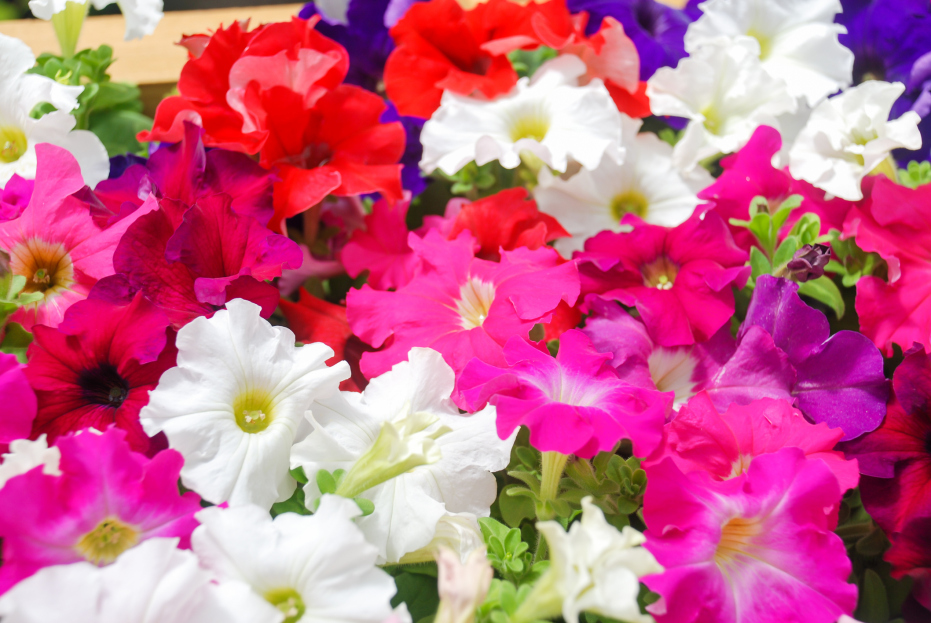
Petunias are popular flowering plants known for their vibrant colors and pleasant fragrance. While they are often grown as annuals outdoors, petunias can also thrive indoors with the right care. Whether you are growing them in a pot or as part of a larger indoor garden, these cheerful blooms can brighten up any space. Here’s a comprehensive guide on how to care for petunias as houseplants.
Petunias love bright light, so it’s important to place them in a location where they can get at least 6 hours of direct sunlight per day. A south- or west-facing window is ideal for providing the ample sunlight that they need to grow and bloom. If you don’t have a sunny spot, you can also use grow lights to supplement natural light, especially during the winter months when sunlight may be limited.
If petunias don’t get enough light, they may become leggy and produce fewer flowers. On the other hand, too much direct sunlight, especially in extremely hot conditions, can cause the leaves to scorch. It’s important to find the right balance to keep your petunias healthy and thriving.
Petunias prefer consistently moist soil, but they do not like to sit in water. Water your plant when the top inch of the soil feels dry to the touch. Be sure to water thoroughly, ensuring that water drains out of the bottom of the pot. Always empty the saucer beneath the pot to prevent the roots from becoming waterlogged.
During the growing season (spring and summer), they may require more frequent watering, especially if they are in a warm or sunny location. In the cooler months, you can reduce watering slightly, but still check the soil regularly to avoid it drying out completely.
Petunias are sensitive to overwatering, which can lead to root rot. Ensure your pot has drainage holes to allow excess water to escape, and avoid letting the plant sit in standing water.
Petunias prefer well-draining, slightly acidic to neutral soil. A standard potting mix will work well for petunias, but you can also add perlite or sand to improve drainage if needed. It’s important to choose a pot with drainage holes to prevent water from accumulating at the bottom, which can cause root rot or increase the chances of pests.
Repotting petunias is generally not necessary unless the plant outgrows its container. If repotting is needed, choose a pot that is 1-2 inches larger than the current one. Repotting can be done in the spring or early summer, when the plant is actively growing.
Petunias thrive in moderate temperatures between 60°F and 75°F (15°C to 24°C). They do not tolerate frost, so they should be kept indoors in cooler months or in regions where frost is common. Petunias can tolerate slightly warmer temperatures, but they may need extra care to ensure they don’t dry out or overheat.
Petunias prefer average humidity levels. If your home is very dry, especially in the winter, you can increase humidity by placing a humidity tray under the pot or using a room humidifier. However, petunias generally do well in typical indoor humidity levels.
Petunias are heavy feeders and benefit from regular fertilization. Use a balanced, water-soluble fertilizer (such as 10-10-10) every 2-4 weeks during the growing season (spring and summer). Fertilizing encourages healthy growth and abundant blooms.
You can also use a liquid fertilizer designed for flowering plants to give your petunias an extra boost. Be careful not to over-fertilize, as this can lead to excessive foliage growth at the expense of flowers.
In the fall and winter, you can reduce or stop fertilizing, as petunias typically enter a period of dormancy during the cooler months.
Pruning and deadheading are important parts of petunia care. Regularly remove spent flowers (a process known as deadheading) to encourage new blooms and prevent the plant from becoming leggy. You can pinch back the tips of the plant to promote bushier growth and to keep the plant looking neat and tidy.
In addition to deadheading, you may need to trim back any leggy or overgrown stems to maintain the plant’s shape. This will help the petunia focus its energy on producing more flowers rather than long, unproductive stems.
Petunias are relatively pest-resistant, but they can occasionally attract aphids, spider mites, or whiteflies. If you notice tiny pests on the leaves or a sticky residue, check the plant carefully. You can treat pests by spraying the plant with insecticidal soap or neem oil, or by wiping the leaves gently with a damp cloth.
Petunias can also be susceptible to fungal diseases like powdery mildew, especially in humid or damp conditions. To prevent fungal issues, make sure your plant has good air circulation, avoid overhead watering, and remove any infected leaves promptly.
In colder climates, petunias are typically grown as annuals outdoors, but they can be brought indoors to continue blooming as houseplants. During the winter, petunias may slow down their growth and produce fewer flowers. To keep your petunia healthy during the colder months, reduce watering slightly and keep the plant in a cool, well-lit location.
If your petunia has become leggy or sparse during the winter, you can prune it back to encourage new growth in the spring.
Petunias are generally considered non-toxic to pets, making them a safe choice for households with cats and dogs. However, as with any plant, it’s best to monitor pets around your plants to prevent them from chewing on the leaves, which could cause mild digestive upset.